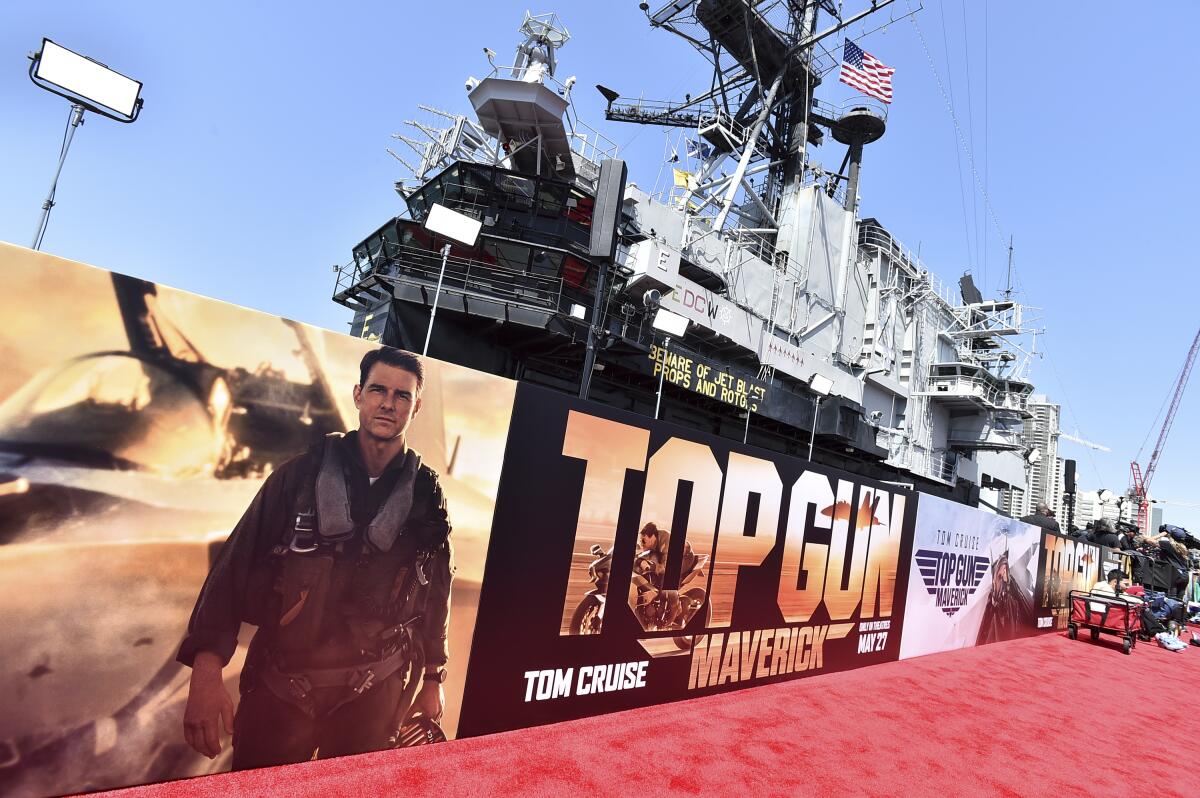Op-Ed: I almost died in Afghanistan. And yet I still love war movies

I have an unusual relationship to war movies. The cinema of combat has melded with my reality in surprising ways.
In 2012, when I was a staff sergeant in the U.S. Army, I set my rucksack down on an improvised explosive device in Afghanistan and lost parts of both arms and both legs — and quite nearly my life — in the ensuing explosion. In addition to my grievous physical injuries, I wrestled with deep emotional scars, not to mention anger. Part of me wished my buddies would just let me die. For the record, I’m now healthy and happy and running a foundation dedicated to helping veterans like me.
Still, you’d think I’d never want to see a war movie again. Nope. I love them, am fascinated by them, as I always have been.
In fact, I hope the genre continues to thrive and grow. It helps us understand our culture and our own identity as a nation — and the painful experiences of other nations, like Ukraine, as they fight invasion — in a visceral way that history books and news reports simply cannot. The Pentagon has shaped thousands of military movies and TV shows for recruiting and public relations purposes, and many are indeed inspiring. Some of the best — not necessarily ones the Defense Department would condone — are also crucial history lessons for our young people.
My interest in war movies — and the history they capture — began in middle school, when my grandmother gave me a VHS copy of Michael Mann’s 1992 epic “Last of the Mohicans.” It depicted hand-to-hand Colonial warfare at its most brutal and demonstrated guerrilla warfare against a conventional army. This was nearly 250 years earlier, but the French and Indian War of the film foreshadowed our experience in Afghanistan — except this time, we played the role of the British fighting on unfamiliar soil.
The HBO miniseries “Band of Brothers” — which premiered days before Sept. 11, 2001 — inspired me to join the Army. And then, as I lay near death in Afghanistan 11 years later, I found myself thinking of a scene from another World War II drama, Steven Spielberg’s “Saving Private Ryan.”
A young medic who was shot through the liver knows he’s dying; his life is bleeding away. He cries out for his mother as the morphine takes effect. It is almost too painful to watch.
Lying on that road in 2012, bleeding, convinced that I was going to die, I thought: “No matter what, I’m not gonna cry out like that.”
When “Saving Private Ryan” was released, some D-day veterans had to leave the theater during the blood-soaked Omaha Beach opening sequence. It was just too realistic. Now I’ve seen films that depict my experience just as accurately.
“The Outpost” from 2019 is perhaps the most accurate depiction of fighting and dying in Afghanistan, and “Band of Brothers” — watched with the hindsight of experience — turns out to be even more true to life than I knew as far as the relationships among soldiers go. These two films show soldiers’ lives when they are not fighting. The boredom. The goofing off. The sometimes brutal put-downs.
Did I mention the boredom?
Gary Sinise’s character of Lt. Dan Taylor in “Forrest Gump” — he loses his legs in a particularly harrowing battle sequence, and right afterward, at least initially, wants to die — resonated with me in powerful, and obvious, ways.
But war films don’t need to depict battles to sear into our consciousness. William Wyler’s “The Best Years of Our Lives” from 1946 sticks in my mind. It’s about three veterans returning home from World War II.
One character, just back from the Pacific, learns that his teenage son has become enamored of Japanese culture. The sequence seems to question our nation’s motivations, remarkably prescient considering debates in the ensuing decades about our country’s role in foreign conflicts.
Harold Russell, an actor who lost both hands and most of his arms in the war, plays a returning sailor who lost both hands and most of his arms in the war. The depiction of his injuries is clear-eyed and unfiltered and was, at the time, jarring to some. He deals with anger and emotional scars. Maybe he too wanted to die when he was first injured.
“The Best Years of Our Lives” captured on screen — right there in front of us, living and breathing — the complex emotions of a seminal moment in American history. And Russell’s extraordinary performance helped this country become more comfortable with disabilities.
So why are war movies important today?
The military and military service are not melded into our society as much as they once were. Yes, women and people of color are now welcome in our armed services, reflecting more of our society. But there are many places in our country where service is practically unheard of.
That’s one reason I see value in current popular movies like “Top Gun: Maverick” and “Operation Mincemeat,” which are, if not war films, at least military-themed. They’re different from the lessons we learn from classics like “All Quiet on the Western Front” (1930), “The Story of G.I. Joe” (1945), “Rome, Open City” (1945), “Battleground” (1949), “The Longest Day” (1962), “A Bridge Too Far” (1977). After that era came films devoting more attention to the horrors of war, or showing them unflinchingly: “Forrest Gump,” “The Thin Red Line,” “Flags of Our Fathers,” “Black Hawk Down.”
War movies also remind us what our fathers and grandfathers — as well as our grandmothers, as in “The Best Years of Our Lives” — went through so we could live in peace. And they can be not only instructive, but also exciting.
I can tell you from experience, it’s just the right kind of “exciting,” because when you’re watching war on screen, no one is shooting at you, attacking you with a tomahawk or burying a bomb at the exact spot where you are about to drop your rucksack.
Travis Mills was a staff sergeant in the U.S. Army and founded the Travis Mills Foundation, which runs a camp in Maine for injured post-9/11 veterans and their families.
More to Read
A cure for the common opinion
Get thought-provoking perspectives with our weekly newsletter.
You may occasionally receive promotional content from the Los Angeles Times.










